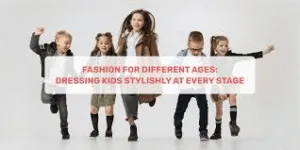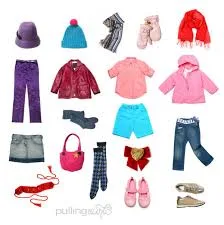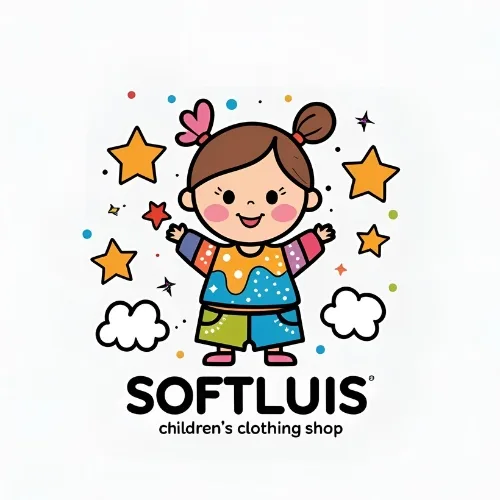News
How to Choose the Right Clothes for Kids at Every Age
Introduction
Choosing clothes for kids might sound simple at first. After all, you just walk into a store, pick something cute, and call it a day, right? But any parent who’s been through a few shopping trips knows it’s not that easy. Babies grow fast, toddlers make messes faster than you can say “oops,” and older kids have opinions that can change overnight. What fit perfectly last week might feel too tight today, and what your child loved yesterday may suddenly be “not cool enough.”
Clothes for children are more than just fabric stitched together. They play a big role in how kids feel day to day. A soft onesie can soothe a newborn’s sensitive skin, a stretchy pair of pants can make a toddler’s playtime easier, and the right outfit can give a shy school-age child a little extra confidence when walking into class. Clothes are tied to comfort, health, and self-expression, even at a very young age.
The challenge for parents is figuring out what’s best for each stage of childhood. Babies, toddlers, preschoolers, school kids, and teenagers all have different needs when it comes to clothing. What works for one age may be completely impractical—or even unsafe—for another.
This guide is here to walk you through those stages. We’ll talk about what to look for when shopping, which fabrics are best, how to balance comfort with style, and some practical tips to make the process less stressful. Whether you’re buying your baby’s first outfit or letting your teenager pick their own style, the goal is the same: to make sure your child feels comfortable, happy, and confident in what they wear.
Newborns (0–12 months)

Newborns are tiny, precious, and extremely sensitive. Their skin is soft but also very delicate, which means not every fabric or design is a good idea. At this age, comfort and safety come first. Cute designs are fun, but they should never get in the way of your baby’s well-being.
Fabrics to Choose
Stick to natural, breathable fabrics. Organic cotton is one of the best options—it’s soft, safe, and gentle on sensitive skin. Bamboo fabric is another excellent choice since it’s breathable and naturally helps regulate temperature. Avoid synthetic fabrics like polyester as much as possible, since they can cause irritation or make your baby sweaty.
Clothing Basics for Newborns
The essentials you’ll want include:
Onesies and bodysuits: Easy to put on, easy to take off, and perfect for layering.
Rompers and sleepers: One-piece outfits that keep your baby cozy day and night.
Swaddles and sleep sacks: Safer alternatives to loose blankets, helping babies sleep soundly.
Soft hats and socks: Babies lose heat quickly, so keeping their heads and feet warm is important.
Things to Avoid
Clothes with too many snaps, buttons, or zippers in tricky places can be frustrating during diaper changes.
Small decorative items like beads or bows can pose a choking hazard.
Rough tags or seams that can irritate a baby’s skin.
Sizing Tips
Newborns grow fast—sometimes in just a matter of weeks. Don’t overbuy in the smallest sizes, or you’ll end up with a drawer full of outfits your baby never wore. It’s smarter to buy a few newborn-size basics and then stock up on 0–3 month or 3–6 month sizes.
Everyday Practicality
At this stage, babies may need several outfit changes a day thanks to spit-ups or diaper leaks. Go for clothes that are machine-washable and durable. Fancy outfits might look adorable, but you’ll reach for the practical ones more often.
The main goal with newborn clothes is simple: keep your baby safe, warm, and comfortable. Soft fabrics, easy designs, and breathable layers will make those first months a little smoother—for both you and your baby.
Toddlers (1–3 years)
If newborns need clothes that are all about softness and safety, toddlers need clothes that can keep up with them. This is the age when kids start crawling, walking, climbing, running, and basically turning every corner of your home into a mini playground. Clothes have to be flexible, easy to change, and tough enough to survive all the adventures (and messes) that come with this stage.
What Toddlers Need in Clothing
Comfort and flexibility
Toddlers are constantly moving, so stiff fabrics are a big no. Stretchy cotton, knit blends, or elastic waistbands make a huge difference. Think pants that allow bending, shirts that don’t ride up every time they stretch, and shoes that support without restricting little feet.Easy to put on and take off
Diaper changes don’t stop just because your baby turned one. Snap buttons, stretchy necklines, and elastic bands help make dressing easier. Also, toddlers often want to “do it myself,” so clothes that slip on and off easily encourage independence.Durability
Be ready: toddlers are messy. They spill food, crawl in the grass, and find mud wherever it hides. Choose clothes that are machine-washable, sturdy, and don’t lose shape after a few washes.
Wardrobe Staples for Toddlers
Elastic-waist pants or leggings: Comfy, easy to pull up and down, great for potty training later on.
T-shirts and soft tops: Simple, breathable, easy to layer.
Overalls or rompers: Cute and practical, but make sure they have easy snaps for quick diaper changes.
Soft jackets and sweaters: Lightweight but warm layers for changing weather.
Comfortable shoes: Toddlers’ feet grow quickly, so check sizes often. Soft-soled shoes are best when they’re learning to walk, then move to sturdier pairs once they’re steady.
Style and Personality
Around this age, toddlers start showing their little personalities. Some might love bright colors, while others latch onto a shirt with a dinosaur or a princess and refuse to take it off. It’s okay to let them have some say in what they wear—it builds independence and confidence. Just keep the options simple: “Do you want the red shirt or the blue one?” works better than handing them a whole closet.
Safety First
Still keep an eye out for safety issues. Avoid clothes with long strings, small buttons that could come off, or accessories that might be pulled into mouths. Shoes should fit well—not too tight, not too loose—to help them walk safely.
Pro Parent Tip
Buy clothes in sets that can mix and match. A few pairs of pants and several tops in complementary colors can give you lots of outfit combinations without needing a huge wardrobe. Also, don’t be surprised if your toddler insists on wearing the same outfit three days in a row—it’s a phase most kids go through, and it usually passes.
At this stage, the goal is freedom of movement, comfort, and a dash of self-expression. Clothes should help your toddler explore the world, not hold them back.
Preschoolers (4–6 years)

By the time kids reach preschool age, clothes become about more than just comfort—they also become part of how children start to express themselves. At 4, 5, or 6 years old, kids often have very strong opinions about what they want to wear. One day it’s all about superheroes, the next day it’s sparkly dresses or nothing but shorts. This stage is where parents start balancing practicality with letting kids make some choices.
What Matters Most at This Age
Independence
Preschoolers are learning to dress themselves, which means clothes should be simple to manage. Think pull-on pants with elastic waists, t-shirts with wide neck openings, and shoes with Velcro instead of laces. The easier it is for them to dress, the more confident they’ll feel.Durability
Kids this age spend hours running, jumping, climbing, and rolling around on the ground. Clothes need to survive all that action. Reinforced knees in pants, sturdy stitching, and fabrics that can handle repeated washes without shrinking or fading are all worth looking for.Comfort First
Even though preschoolers might want to wear fancy outfits, comfort should still come first. Scratchy fabrics, tight collars, or stiff shoes will make them cranky fast. Stick with breathable cotton, flexible knits, and well-fitted shoes.
Wardrobe Staples for Preschoolers
T-shirts and long-sleeve tops: Fun prints, bold colors, or characters they love.
Leggings or jogger pants: Flexible, comfy, and perfect for playtime.
Shorts and skirts with elastic bands: Easy to pull on and off, especially for bathroom breaks.
Light jackets or hoodies: Easy layers that kids can put on themselves.
Velcro shoes or slip-ons: Encourage independence while keeping things practical.
Encouraging Self-Expression
Preschoolers often want to pick their own outfits, and while some of their choices may look unusual (a tutu with rain boots, anyone?), letting them experiment is important. Clothes are one of the first ways kids show personality and creativity. You can guide them by offering two or three options that are all practical, then letting them choose.
Teaching Responsibility Through Clothes
This is also a good age to start teaching small lessons about clothes:
How to fold a shirt and put it away.
Putting dirty clothes in the laundry basket.
Learning which shoes are for outdoor play and which are for indoors.
These small habits help kids feel more responsible and independent.
Safety Reminders
As kids get more active, make sure clothes don’t get in the way. Avoid drawstrings around the neck (choking hazard) and very loose clothing that could get caught on playground equipment. Shoes should have good grip to prevent slips.
Parent Tip
Buy a mix of “everyday play” clothes and a few nicer outfits for special occasions. Don’t stress if the everyday ones get worn out quickly—that’s a sign your child is having fun.
For preschoolers, the sweet spot is finding clothes that are durable, comfortable, and flexible while giving them room to express themselves. It’s less about perfection and more about practicality and fun.
School-age Kids (7–12 years)
Once kids start elementary school, clothes become part of their identity in a new way. They’re no longer just dressing for comfort or for play—they’re dressing for social life. Kids between 7 and 12 start noticing what their friends are wearing. They care about looking “cool,” even if their idea of cool is wearing the same superhero hoodie five days in a row.
This stage is about balancing style, comfort, and practicality. Parents often find themselves walking a fine line: respecting their child’s growing sense of individuality while also making sure clothes are durable, appropriate, and affordable.
Key Needs at This Age
Style + Comfort Balance
Kids this age want to fit in with their peers, but comfort still matters. Fabrics should be breathable, flexible, and suitable for active school days. A shirt might look stylish, but if it’s itchy or stiff, it won’t get worn.Durability for Active Days
School means recess, sports, art class, and sometimes messy science projects. Clothes should be tough enough to handle it all. Reinforced stitching, good-quality denim, and sneakers that can take a beating are worth the investment.Growing Bodies
Kids grow fast during these years, sometimes in sudden spurts. Buying slightly larger sizes or adjustable waistbands can help clothes last longer. Keep in mind that shoes, especially, may need replacing every few months.
Wardrobe Staples for School-age Kids
T-shirts and casual tops: Simple designs, fun graphics, or trendy styles.
Jeans or cargo pants: Durable and versatile.
Leggings or joggers: Comfortable for both school and after-school activities.
Sweatshirts and hoodies: A must-have—easy to layer, stylish, and practical.
Sporty sneakers: Supportive shoes that work for school, sports, and play.
A “special outfit”: Something nice for birthdays, family events, or school performances.
Self-Expression and Identity
At this age, many kids start experimenting with style. Some might want sporty clothes, while others love dresses, graphic tees, or bright accessories. Parents can encourage individuality while setting basic rules, like keeping school clothes practical. Letting your child have a say in what they wear helps them feel more confident.
Peer Pressure and “Fitting In”
It’s also the stage where peer pressure kicks in. Your child might want a specific brand or style because “everyone else has it.” While it’s not always possible (or necessary) to buy everything they ask for, listening to their preferences shows respect for their feelings. You can teach them about balancing trends with comfort and budget.
Safety and Practicality
By now, safety concerns are less about choking hazards and more about comfort and practicality. Make sure shoes support growing feet and that backpacks and outerwear are durable enough for daily use. For active kids, sweat-wicking fabrics can help them stay comfortable.
Parent Tip
Stock up on basics that mix and match easily. A handful of neutral bottoms with a variety of colorful tops can create dozens of outfits. Also, keep a small stash of backup clothes at school (if allowed) for accidents, spills, or unexpected messes.
For school-age kids, clothes become part of how they see themselves and how they’re seen by others. Helping them find a balance between style, comfort, and individuality will not only make mornings smoother but also build their confidence as they navigate friendships and growing up.
Teenagers (13+ years)
Teenagers are in a world of their own when it comes to clothing. By this point, parents don’t just “buy clothes for their kids”—they step into the role of negotiator, sometimes stylist, sometimes financial manager, and often just a supportive listener. Clothes for teens are about identity, independence, and confidence.
What Clothing Means to Teens
For teenagers, what they wear is tied closely to how they see themselves and how they want others to see them. Outfits become statements: “I’m sporty,” “I’m artistic,” “I’m trendy,” or “I don’t care about fashion” (which, ironically, is a style of its own). Clothing helps teens explore who they are and who they want to be.
This stage can be challenging for parents, but it’s also an opportunity to bond. Respecting your teen’s clothing choices shows that you trust them, while gently guiding them toward practicality keeps things grounded.
Key Needs at This Age
Self-Expression
Teens want to stand out—or sometimes blend in—with their friends. Fashion becomes a way to test out identities. They might go through phases: sporty one month, grunge the next, preppy after that. It’s all part of growing up.Comfort Still Matters
Even if teens want stylish clothes, comfort can’t be ignored. Jeans that are too stiff, shoes that hurt, or tops that itch won’t get worn, no matter how trendy they are. Help them find pieces that look good and feel good.Budget Awareness
Teen fashion often overlaps with brand culture. Teens may ask for specific labels or shoes that cost more than most adult wardrobes. It’s important to set boundaries while teaching them about budgeting. Consider giving them a clothing allowance so they learn to make choices within limits.
Wardrobe Staples for Teens
Jeans and casual pants: Still a foundation piece, but teens often prefer specific cuts—skinny, wide-leg, or baggy depending on current trends.
Hoodies and sweatshirts: A universal teen favorite, perfect for layering and everyday wear.
T-shirts and graphic tees: A way to show interests—bands, games, quotes, or just cool designs.
Sneakers: For many teens, sneakers aren’t just shoes—they’re part of identity. Collecting or showing off sneakers can become a passion.
Jackets or outerwear: From denim jackets to oversized coats, these often double as fashion statements.
Dressier outfits: Even if they resist, it’s worth having one or two nicer outfits for family gatherings, school dances, or formal events.
Challenges for Parents

Clothing rules: Schools often have dress codes, and sometimes teens push against them. This can cause tension at home. It helps to discuss why certain rules exist while still allowing space for personal style outside of school.
Body changes: Puberty brings rapid physical changes, which can make clothes tricky. Teens might feel self-conscious about their bodies. Support them with clothes that fit well and help them feel confident.
Trends move fast: What’s “in” today can be “out” tomorrow. Don’t feel pressured to chase every new trend. Encourage your teen to find pieces that feel timeless to them.
Parent Tip
One of the best ways to connect with your teen is to go shopping together—not as a lecture, but as a partnership. Ask what they like, let them show you, and maybe introduce them to some practical choices too. Sometimes, just listening matters more than what ends up in the shopping bag.
At this stage, clothing is no longer just about fabric and function—it’s about identity, belonging, and independence. Helping your teenager navigate fashion without judgment creates trust and gives them the confidence to explore who they are, both inside and out.
Practical Tips for Parents
No matter what age your child is, shopping for their clothes can sometimes feel like a never-ending task. Between growth spurts, changing seasons, and evolving tastes, it’s easy to feel overwhelmed. But with a few smart strategies, the process can become much smoother—and maybe even enjoyable.
1. Buy a Little Bigger
Kids grow fast, and sometimes it feels like they outgrow clothes overnight. A good trick is to buy clothes just a little larger than their current size. Not so big that they look uncomfortable, but roomy enough that your child can wear them for several months (or even a year). Adjustable waistbands, stretchy fabrics, and layered outfits help clothes last longer through growth spurts.
2. Choose Versatile Pieces
Instead of buying one-off outfits, go for pieces that can mix and match. A handful of neutral pants and several colorful tops can create lots of different looks. This not only saves money but also makes mornings easier—you don’t have to think too hard about what matches.
3. Think Ahead for Seasons
Try to plan your child’s wardrobe around upcoming seasons. For example, if summer is around the corner, stock up on light cotton tops and shorts. If winter is approaching, look for jackets, sweaters, and cozy layers before the cold hits. Shopping a season ahead during sales can also save money.
4. Prioritize Quality Over Quantity
It’s tempting to buy lots of cheaper clothes, but sometimes investing in a few high-quality pieces pays off. A sturdy pair of shoes or a well-made jacket can outlast several cheaper alternatives. Durable clothes also handle multiple washes better, which is essential when kids go through outfits so quickly.
5. Keep Extras Handy
Accidents happen—spills, mud, or a sudden rainstorm. Keeping an extra set of clothes in the car, backpack, or at school can save the day. This is especially useful for toddlers and preschoolers, but even older kids can benefit from a backup plan.
6. Involve Your Kids
Even little ones can help choose their clothes. Giving them simple choices (“Do you want the blue shirt or the green one?”) makes them feel included. Older kids and teens will definitely want a say in what they wear, and listening to their preferences builds confidence and reduces morning arguments.
7. Budget Wisely
Set aside a clothing budget and stick to it. For teens, consider giving them a monthly or seasonal allowance for clothes. This teaches them responsibility and helps them appreciate the value of money.
8. Care for Clothes Properly
Extend the life of your child’s wardrobe by following washing instructions, using gentle detergents, and air-drying when possible. Teach older kids how to take care of their own clothes—it’s a skill that will serve them well later in life.
9. Embrace Hand-Me-Downs
If you have multiple children, or friends with kids slightly older, hand-me-downs can be a lifesaver. Just make sure the clothes are still in good condition, and let your child pick their favorites so they still feel ownership.
10. Keep It Simple
At the end of the day, kids don’t need overflowing closets. A few well-chosen, comfortable, and versatile outfits are enough. Simplicity makes life easier—for you and for them.

